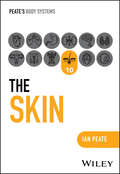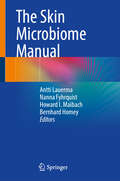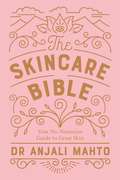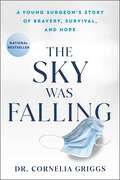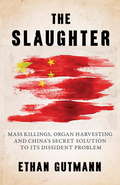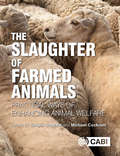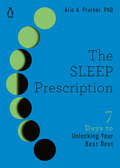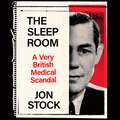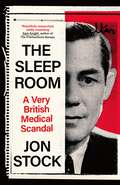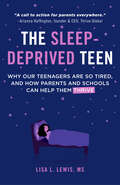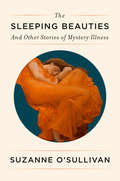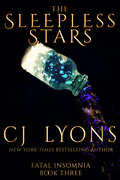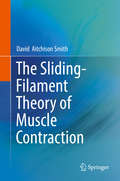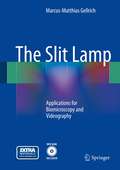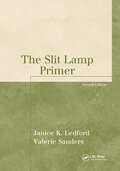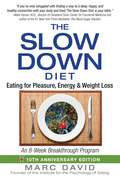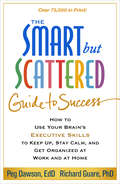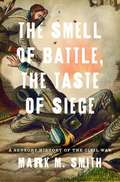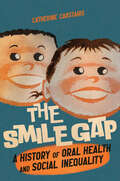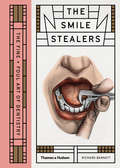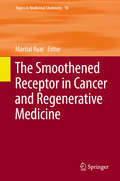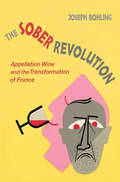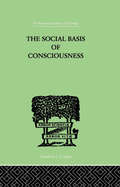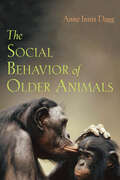- Table View
- List View
The Skin (Peate's Body Systems)
by Ian PeatePEATE’S BODY SYSTEMS THE SKIN A CONCISE, ILLUSTRATED, AND ACCESSIBLE GUIDE TO THE SKIN Each of the twelve volumes in Peate’s Body Systems series is rooted in the belief that a deep and thorough understanding of the human body is essential for providing the highest standard of care. Offering clear, accessible and up-to-date information on different body systems, this series bridges the gap between complex scientific concepts and practical, everyday applications in health and care settings. This series makes for an invaluable resource for those committed to understanding the intricacies of human biology, physiology and the various systems that sustain life. The Skin is the perfect companion for students and newly registered practitioners across nursing and allied health fields with an interest in dermatological care, providing a comprehensive yet easy-to-digest guide for both academic and clinical application. Equips healthcare students and practitioners with the necessary information to provide safe and competent careFeatures colourful illustrations to aid comprehension, clarify complicated concepts, and render content more engaging and accessibleEmpowers readers to adapt to a rapidly evolving healthcare landscape, preparing them for the future of healthcare deliveryContains information necessary for effective patient care of those with psoriasis, eczema, burns, and other skin diseases and conditions
The Skin Microbiome Manual
by Howard I. Maibach Antti Lauerma Nanna Fyhrquist Bernhard HomeyThis title represents the definitive reference for all aspects of the skin microbiome. It represents a thorough review of the mechanical and physical mechanisms of the skin, covering the immune response to potential skin breaches and detailing the vast number of microbial challenges that the skin must repel. The Skin Microbiome Manual explains every aspect of the protection provided by the skin, describing how it occasionally fails and how this helps in understanding the mechanisms involved. The world-class Editorial Board and their chapter authors also investigate the ways in which dermatology provides methods to prevent or overcome the deleterious effects of these challenges to the skin’s integrity. This book therefore represents an essential text for all clinical dermatologists and those in training who are seeking a deeper discussion of the skin as a complex biome and how this affects dermatological health.
The Skincare Bible: Your No-Nonsense Guide to Great Skin
by Dr Anjali MahtoFor anyone who loves straight-talking, practical advice on skincare, this book is the perfect, beautiful gift._________________We all know that taking good care of our skin is the key to any effective health and beauty regime. But with so much conflicting information, the path to healthy skin can seem far from clear.Dr Anjali Mahto is one of the UK's leading consultant dermatologists. Equipped with years of expertise, she sets out to cut through the noise and distinguish the nuggets from the nonsense! Tackling common complaints such as acne, dryness, rosacea and aging, The Skincare Bible is your definitive companion to your body's biggest organ.Clear, concise and packed full of tips on the best products and routines, it will help you discover what works for you and find confidence in your own skin._________________'I now feel safe in the knowledge that I'm armed with the latest science-backed information about how to care for my skin' Chloe Brotheridge, author of The Anxiety Solution'A refreshing, fad-free guide to glowing skin. A must-read for anyone struggling with their skin health' Dr Megan Rossi, author of Eat Yourself Health
The Sky Was Falling: A Young Surgeon's Story of Bravery, Survival, and Hope
by Dr. Cornelia GriggsA NATIONAL BESTSELLER In this &“essential work that provides lasting insights and lessons for the individual and society&” (Jerome Groopman, MD, New York Times bestselling author), a young pediatric surgeon and mother reveals her dramatic, cathartic diary, written as she worked on the front lines of the COVID-19 pandemic at one of New York City&’s busiest hospitals. For many of us, the experience of the peak pandemic was eerily incongruous. We were sequestered in our quiet homes but reminded of the devastation by the never-ending ping of news alerts. Dr. Cornelia Griggs&’s experience was altogether different. A pediatric surgery fellow in New York City, she was entering the final victory lap at the end of nine grueling years of training. She was set for a big graduation celebration and looking forward to spending some real time with her husband and kids. Then came COVID-19. Initially, Griggs encouraged her friends and family not to panic. However, as mysterious cases began showing up in the hospital, and then hospital supplies started disappearing from shelves, she couldn&’t hold back the feeling that this was going to be worse than she had thought. She wrote a startling op-ed in The New York Times called &“The Sky Is Falling&” that went, for lack of a better word, viral. The piece was read by over a million people, and Griggs appeared on CNN. Having once aspired to be a journalist, Griggs found that the only way to make sense of what she was witnessing around her and maintain her sanity was to keep a diary. The Sky Was Falling is her day-to-day account of what most of us were grateful to only see in the news—the sharply increasing case numbers, the dwindling supply of respirators, the lack of clarity on how to treat this new disease. Harrowing, deeply personal, and page-turning in the way of the best medical memoirs, it tells the story of healthcare professionals who went beyond what they thought they were capable of to heal their patients, and themselves.
The Slaughter
by Ethan GutmannThe inside story of China's organ transplant business and its macabre connection with internment camps and killing fields for arrested dissidents, especially the adherents of Falun Gong.Mass murder is alive and well. That is the stark conclusion of this comprehensive investigation into the Chinese state's secret program to get rid of political dissidents while profiting from the sale of their organs--in many cases to Western recipients. Based on interviews with top-ranking police officials and Chinese doctors who have killed prisoners on the operating table, veteran China analyst Ethan Gutmann has produced a riveting insider's account--culminating in a death toll that will shock the world. Why would the Chinese leadership encourage such a dangerous perversion of their medical system? To solve the puzzle, Gutmann journeyed deep into the dissident archipelago of Falun Gong, Tibetans, Uighurs and House Christians, uncovering an ageless drama of resistance, eliciting confessions of deep betrayal and moments of ecstatic redemption. In an age of compassion fatigue, Gutmann relies on one simple truth: those who have made it back from the gates of hell have stories to tell. And no matter what baggage the reader may bring along, their preconceptions of China will not survive the trip.From the Hardcover edition.
The Slaughter of Farmed Animals: Practical ways of enhancing animal welfare
by Peter Singer Andy Lamey Bernard Rollin Lotta Berg Claudia Terlouw Faith Baier Miki Ben-Dor Lily N. Edwards-Callaway Helen Kline F Leroy Frank Mitloehner Mohan Raj Dennis Wilson Erika VoogdThis book provides both evidence-based scientific studies and practical guidance to enhance the welfare of cattle, pigs, sheep and poultry at slaughter. Temple Grandin and Michael Cockram have brought together a range of international experts to prepare chapters on philosophical and ethical views on the slaughter of farmed animals. These include welfare issues and their assessment, the condition of animals on arrival and their management during lairage, animal handling, methods of humane slaughter and assessment of unconsciousness. The book boldly tackles controversial issues around the compromises necessary when balancing animal welfare concerns with commercial realities, as well as religious slaughter. Chapters cover methods of stunning, pre-slaughter handling, equipment design, monitoring welfare with abattoir data and auditing methods. It is an important publication for those involved in implementing improvements in the humane slaughter of farmed animals and is recommended for veterinarians, students, abattoir managers and government regulators.
The Sleep Prescription: Seven Days to Unlocking Your Best Rest (The Seven Days Series #2)
by Aric A. Prather&“Vastly knowledgeable and genuinely brilliant . . . An easy yet most effective how-to guide on sleep.&” —Dr. Matthew Walker, New York Times bestselling author of Why We SleepFrom renowned sleep scientist Dr. Aric Prather, a book that offers a simple yet powerful plan to improve your sleep in seven daysWe need sleep to survive. Sleep is as essential as food, water, and oxygen. So how can something that should be so instinctual and automatic be so hard? Dr. Prather runs one of the world&’s most successful sleep clinics and has cracked the code to help even the most restless of sleepers get a good night&’s rest. In The Sleep Prescription, Dr. Prather shares the powerful solutions that he uses to help his patients at the clinic achieve healing and restorative sleep. Going beyond the obvious solutions, Dr. Prather shares surprisingly simple yet deeply effective techniques that will help you lie back and let sleep work its magic.The seven-day prescription will lead you through these exercises:Day 1: Set Your (Internal) ClockDay 2: Ease Off the GasDay 3: Energize—But Do It RightDay 4: Worry EarlyDay 5: You Are Not a Computer; You Can't Just Shut DownDay 6: (Re)Train Your BrainDay 7: Stay Up LateOver the course of seven days, this book will teach you how to get out of your own way, so that your body can do effortlessly what it was built to do: sleep well.
The Sleep Room: A Very British Medical Scandal
by Jon Stock'Shocking... a damning portrait of a man who, in the name of psychiatric progress, left a trail of broken lives in his wake' Telegraph, five stars'Compelling' Sunday Times"A gripping expose" Financial Times'A beautifully researched, wildly unsettling study of a psychiatrist running amok' Sam Knight, author of The Premonitions BureauThe Royal Waterloo Hospital, London in the 1960s. Six young women lie asleep on low beds. Day and night no longer exist, extinguished by a potent cocktail of antipsychotic, sedative and anti-depressant drugs. The women are taken from their beds by the nurses and given electroconvulsive therapy before being put to sleep again. All under the predatory eye of Dr William Sargant.THE SLEEP ROOM is a chilling exposé of Sargant's bizarre psychiatric treatments that were inflicted on hundreds of women with mental illness - among them the actor Celia Imrie. At the story's centre is a sinister and charismatic doctor, who was a hugely influential figure in post-war British society - lauded by Robert Graves and Aldous Huxley as well regularly appearing on the BBC. When Sargant died in 1988, the obituaries were glowing.But since then, women treated without their consent and with often horrific side-effects lasting decades have been campaigning to tell the truth about Sargant. Author Jon Stock tells these women's stories as well delving into the murky history of Sargant's links with the CIA and M15, both of which took a close interest in his efforts to reprogramme the human mind.As compulsive as a thriller, The Sleep Room finally gets to the truth of a scandal at the heart of the British medical establishment.'A devastating account of the effects one unchecked psychiatrist had on vulnerable mental patients.'Lisa Appignanesi, author of Mad, Bad and Sad: A History of Women and the Mind Doctors'A gripping medical biography that encompasses sex, drugs, brainwashing, intelligence operations, murder and several scandals' Frank Tallis, author of Mortal Secrets: Freud, Vienna and the Discovery of the Modern Mind'A chilling case study in dangerous psychiatry, Stock's gripping exposé of the invasive and reckless interventions inflicted on women in the Sleep Room will keep you wide awake.' Cordelia Fine, author of Patriarchy Inc. and Testosterone Rex
The Sleep Room: A Very British Medical Scandal
by Jon Stock'Shocking... a damning portrait of a man who, in the name of psychiatric progress, left a trail of broken lives in his wake' Telegraph, five stars'Compelling' Sunday Times and chosen as one of the best 80 books to take on holiday'A gripping expose' Financial Times'Lacerating' Blake Morrison, Guardian Book of the Day 'A beautifully researched, wildly unsettling study of a psychiatrist running amok' Sam Knight, author of The Premonitions Bureau"Richly sourced and admirable in its clarity about the importance of speaking to those who were treated by and knew Sargant," Dr Kate Womersley, The Lancet'Shocking investigation' The Times, chosen as a best book of 2025The Royal Waterloo Hospital, London in the 1960s. Six young women lie asleep on low beds. Day and night no longer exist, extinguished by a potent cocktail of antipsychotic, sedative and anti-depressant drugs. The women are taken from their beds by the nurses and given electroconvulsive therapy before being put to sleep again. All under the predatory eye of Dr William Sargant.THE SLEEP ROOM is a chilling exposé of Sargant's bizarre psychiatric treatments that were inflicted on hundreds of women with mental illness - among them the actor Celia Imrie. At the story's centre is a sinister and charismatic doctor, who was a hugely influential figure in post-war British society - lauded by Robert Graves and Aldous Huxley as well regularly appearing on the BBC. When Sargant died in 1988, the obituaries were glowing.But since then, women treated without their consent and with often horrific side-effects lasting decades have been campaigning to tell the truth about Sargant. Author Jon Stock tells these women's stories as well delving into the murky history of Sargant's links with the CIA and M15, both of which took a close interest in his efforts to reprogramme the human mind.As compulsive as a thriller, The Sleep Room finally gets to the truth of a scandal at the heart of the British medical establishment.'A devastating account of the effects one unchecked psychiatrist had on vulnerable mental patients.'Lisa Appignanesi, author of Mad, Bad and Sad: A History of Women and the Mind Doctors'A gripping medical biography that encompasses sex, drugs, brainwashing, intelligence operations, murder and several scandals' Frank Tallis, author of Mortal Secrets: Freud, Vienna and the Discovery of the Modern Mind'A chilling case study in dangerous psychiatry, Stock's gripping exposé of the invasive and reckless interventions inflicted on women in the Sleep Room will keep you wide awake.' Cordelia Fine, author of Patriarchy Inc. and Testosterone Rex
The Sleep-Deprived Teen: Why Our Teenagers Are So Tired, and How Parents and Schools Can Help Them Thrive
by Lisa L. LewisAn Eye-Opening Parenting Guide for Better Teenage Sleep“In this timely book, Lisa L. Lewis underscores why sleep is so vital for adolescent well-being and resilience and offers detailed, actionable tools for bringing about change.” —Arianna Huffington, founder & CEO of Thrive Global#1 New Release in Teen Health, Sleep Medicine, and Sleep DisordersIn The Sleep-Deprived Teen, parenting journalist Lisa L. Lewis provides parents with the roadmap for more (and better) sleep for their teens —and perhaps even for themselves.Pick up this actionable guide for parents of exhausted teens. Teenagers are tired, strapped for time, and often asked to wake up far earlier than they should due to school start times. In The Sleep-Deprived Teen, Lisa L. Lewis, who helped spark the first law in the nation requiring healthy school start times for adolescents, has written a reader-friendly book for parents who want to help their fatigued teens and tweens sleep well. Learn the science of why teenage sleep matters and how sleep changes during the teen years. Poor sleep affects mental health, athletic performance, and academic success. It contributes to adolescent depression, anxiety, and even drowsy driving. On the flip side, when teens are well-rested, they’re happier, healthier, and more emotionally resilient. In The Sleep-Deprived Teen, you’ll find:The science of why sleep matters and how it changes during the teen yearsA synthesis of the research, including tips and strategies to promote healthy sleep habits and help teens avoid poor sleep patternsAn essential primer on technology, and a look at how gender, sexual identity, socioeconomic status, and race and ethnicity can affect teenage sleepIf you’ve read books like Parenting the New Teen in the Age of Anxiety, Generation Sleepless, or Inconvenient Sleep, then The Sleep-Deprived Teen is for you.
The Sleeping Beauties: And Other Stories of Mystery Illness
by Suzanne O'SullivanIn Sweden, hundreds of refugee children fall into a state that resembles sleep for months or years at a time. In Le Roy, a town in upstate New York, teenage girls develop involuntary twitches and seizures that spread like a contagion. In the U.S. Embassy in Cuba, employees experience headaches and memory loss after hearing strange noises during the night. These are only a few of the many suspected culture-bound psychosomatic syndromes—specific sets of symptoms that exist in a particular culture or environment—that affect people throughout the world. In The Sleeping Beauties, Dr. Suzanne O&’Sullivan—an award-winning Irish neurologist—investigates psychosomatic disorders, traveling the world to visit communities suffering from these so-called mystery illnesses. From a derelict post-Soviet mining town in Kazakhstan to the Mosquito Coast of Nicaragua to the heart of the María Mountains in Colombia, O&’Sullivan records the remarkable stories of syndromes related to her by people from all walks of life. Riveting and often distressing, these case studies are recounted with compassion and humanity. In examining the complexity of psychogenic illness, O&’Sullivan has written a book of both fascination and serious concern as these syndromes continue to proliferate around the globe.
The Sleepless Stars (Fatal Insomnia Medical Thrillers #3)
by CJ LyonsThe series finale featuring “a heroine you’ll never forget and a story that whips by at bullet speed” by the New York Times–bestselling author (Tess Gerritsen).When you have no time left, you realize what you’re really living for . . . For Dr. Angela Rossi the past holds only pain and the future promises only an early death as Fatal Insomnia consumes her.But Angie will never stop fighting. Especially now that she’s learned that her disease—and the disease she’s discovered in dozens of young children—isn’t a quirk of heredity but rather the creation of an unknown cabal. While Angie explores the betrayals and lies that led to the Fatal Insomnia epidemic, Devon Price, whose daughter is also infected, uses his street skills to hunt those responsible. He’ll do anything to save his daughter. Lie, cheat, steal, kill . . . it doesn’t matter. Not as long as Esme is saved.In the end, their only hope might be a desperate deal with the devil: the cabal behind the man-made Fatal Insomnia epidemic. A deal paid with blood. A deal not everyone will survive.Praise for the Fatal Insomnia series“CJ Lyons scores a major triumph . . . a remarkable medical thriller equal to the very best of Robin Cook or Michael Crichton. This intelligent, well-crafted novel, based on a startlingly original premise, builds up tension to the breaking point and beyond, delivering plenty of surprises along the way. Totally absorbing and impossible to put down.” —Douglas Preston, #1 New York Times–bestselling author
The Sliding-Filament Theory of Muscle Contraction
by David Aitchison Smith<p>Understanding the molecular mechanism of muscle contraction started with the discovery that striated muscle is composed of interdigitating filaments which slide against each other. Sliding filaments and the working-stroke mechanism provide the framework for individual myosin motors to act in parallel, generating tension and loaded shortening with an efficient use of chemical energy. Our knowledge of this exquisitely structured molecular machine has exploded in the last four decades, thanks to a bewildering array of techniques for studying intact muscle, muscle fibres, myofibrils and single myosin molecules. <p>After reviewing the mechanical and biochemical background, this monograph shows how old and new experimental discoveries can be modelled, interpreted and incorporated into a coherent mathematical theory of contractility at the molecular level. The theory is applied to steady-state and transient phenomena in muscle fibres, wing-beat oscillations in insect flight muscle, motility assays and single-molecule experiments with optical trapping. Such a synthesis addresses major issues, most notably whether a single myosin motor is driven by a working stroke or a ratchet mechanism, how the working stroke is coupled to phosphate release, and whether one cycle of attachment is driven by the hydrolysis of one molecule of ATP. Ways in which the theory can be extended are explored in appendices. <p>A separate theory is required for the cooperative regulation of muscle by calcium via tropomyosin and troponin on actin filaments. The book reviews the evolution of models for actin-based regulation, culminating in a model motivated by cryo-EM studies where tropomyosin protomers are linked to form a continuous flexible chain. It also explores muscle behaviour as a function of calcium level, including emergent phenomena such as spontaneous oscillatory contractions and direct myosin regulation by its regulatory light chains. Contraction models can be extended to all levels of calcium-activation by embedding them in a cooperative theory of thin-filament regulation, and a method for achieving this grand synthesis is proposed. <p>Dr. David Aitchison Smith is a theoretical physicist with thirty years of research experience in modelling muscle contractility, in collaboration with experimental groups in different laboratories.</p>
The Slit Lamp
by Marcus-Matthias GellrichIn this book the author describes in detail the history, construction, and examination potential of the slit lamp. In particular, however, he presents a new approach - videography - that allows the ophthalmologist to document all eye diseases with the slit lamp and a video camera in a practicable, rapid, and affordable manner. The necessary methods, techniques, and equipment, including converging, diverging, and contact lenses, are clearly explained in the text and four didactic videos. The 20 most important videographic settings are described, and "recipes" for their use are presented, along with diagnostic tips. The accompanying collection of clinical images represents the world's first ever general atlas of ophthalmology from the perspective of the slit lamp. It is the author's hope that this introduction to ophthalmological videography, with its many images never previously produced with a slit lamp, will stimulate others to exploit the approach's potential.
The Slit Lamp Primer (The Basic Bookshelf for Eyecare Professionals)
by Janice K. LedfordThe Slit Lamp Primer is the complete book on the slit lamp for the ophthalmic and optometric office. Now updated into a second edition, this user-friendly introduction to the slit lamp microscope highlights the instrument's basic parts as well as examination and illumination techniques. Janice Ledford and Valerie Sanders explain more than just the fundamentals of the slit lamp. Written in a conversational style with supplemental photographs and diagrams, The Slit Lamp Primer delves into issues concerning the normal, postoperative, and problematic eye. Features of the patient history, including medications, are examined in light of the possible slit lamp findings. Detailed notes for proper documentation are included, along with tables to give guidelines for subjective grading of the findings. Updated and key features: The examination of patients on various systemic medications with a list of drugs that may have side effects visible with the slit lamp The examination of post-operative patients, with a new section that focuses on patients who have undergone refractive surgery Up-to-date study icons, key points listed at the beginning of each chapter, and "What the Patient Needs to Know" sidebars Photographs and descriptions of parts and care of the slit lamp Atlas of photographs of the normal eye Photographs of pathology Tables to assist in contact lens evaluation The Slit Lamp Primer, Second Edition is a valuable addition to the reference library of any ophthalmic and optometric paraprofessional or student. Explore the workings of a useful and effective instrument with the most practical and user-friendly book on the subject available today.
The Slow Down Diet: Eating for Pleasure, Energy, and Weight Loss
by Marc DavidA revolutionary approach to enhancing metabolism that enables lasting weight loss and facilitates spiritual well-being • Presents an eight-week weight-loss program • Explains how relaxed eating stimulates metabolic function and how stress hormones encourage weight gain • Shows how fully enjoying each meal is the optimal way to a healthy body Our modern culture revolves around fitting as much as possible into the least amount of time. As a result, most people propel themselves through life at a dizzying pace that is contrary to a healthy lifestyle. We eat fast, on the run, and often under stress, not only removing most of the pleasure we might derive from our food and creating digestive upset but also wreaking havoc on our metabolism. Many of us come to the end of a day feeling undernourished, uninspired, and overweight. In this 10th anniversary edition, Marc David presents a new way to understand our relationship to food, focusing on quality and the pleasure of eating to transform and improve metabolism. Citing cutting-edge research on body biochemistry as well as success stories from his own nutritional counseling practice, he shows that we are creatures of body, mind, and spirit and that when we attend to these levels simultaneously we can shed excess pounds, increase energy, and enhance digestion to feel rejuvenated and inspired. He presents an eight-week program that allows readers to explore their unique connection to food, assisting them in letting go of their fears, guilt, and old habits so they can learn to treat their bodies in a dignified and caring way. He reveals the shortcomings of all quick-fix digestive aids and fad diets and debunks common nutrition myths, such as “the right way to lose weight is to eat less and exercise more.” He shows instead how to decrease cortisol and other stress hormones and boost metabolic power through proper breathing and nutritional strategies that nourish both the body and soul, proving that fully enjoying each meal is the optimal way to a healthy body. Drawing on more than 30 years of experience in nutritional medicine, the psychology of eating, and the science of yoga, Marc David offers readers practical tools that will yield life-transforming, sustainable results.
The Smallpox Report: Vaccination and the Romantic Illness Narrative
by Fuson WangAfter the COVID-19 pandemic, vaccination has become synonymous with an opaque biopower that legislates compulsory immunization at a distance. Contemporary illness narratives have become outlets for distrust, misinformation, reckless denialism, and selfish noncompliance. In The Smallpox Report, Fuson Wang rewinds this contemporary impasse between physician and patient back to the Romantic-era origins of vaccination. The book offers a literary-historical account of smallpox vaccination, contending that the disease’s eventual eradication in 1980 was as much a triumph of the literary imagination as it was an achievement of medical Enlightenment science. Wang traces our modern pandemic-era crisis of vaccine hesitancy back to Edward Jenner’s publication of his treatise on vaccination in 1798, the first rumblings of an anti-vaccination movement, and vaccination’s formative literary history that included authors such as William Wordsworth, William Blake, John Keats, Mary Shelley, and Arthur Conan Doyle. The book concludes with a re-examination of the current deeply contentious public discourse about vaccines that has arisen in the wake of the COVID-19 pandemic. By recovering the surprisingly literary genres of Romantic-era medical writing, The Smallpox Report models a new literary historical perspective on our own crises of vaccine refusal.
The Smart but Scattered Guide to Success: How to Use Your Brain's Executive Skills to Keep Up, Stay Calm, and Get Organized at Work and at Home
by Peg Dawson Richard GuareAre you smart, scattered, and struggling? You're not alone. Cutting-edge research shows that today's 24/7 wired world and the growing demands of work and family life may simply max out the part of the brain that manages complex tasks. That's especially true for those lacking strong executive skills/m-/the core brain-based abilities needed to maintain focus, meet deadlines, and stay cool under pressure. In this essential guide, leading experts Peg Dawson and Richard Guare help you map your own executive skills profile and take effective steps to boost your organizational skills, time management, emotional control, and nine other essential capacities. The book is packed with science-based strategies and concrete examples, plus downloadable practical tools for creating your own personalized action plan. Whether on the job or at home, you can get more done with less stress. See also the authors' Smart but Scattered parenting guides, plus an academic planner for students and related titles for professionals.
The Smell of Battle, The Taste of Siege: A Sensory History of the Civil War
by Mark M. SmithHistorical accounts of major events have almost always relied upon what those who were there witnessed. Nowhere is this truer than in the nerve-shattering chaos of warfare, where sight seems to confer objective truth and acts as the basis of reconstruction. In The Smell of Battle, the Taste ofSiege, historian Mark M. Smith considers how all five senses, including sight, shaped the experience of the Civil War and thus its memory, exploring its full sensory impact on everyone from the soldiers on the field to the civilians waiting at home. From the eardrum-shattering barrage of shells announcing the outbreak of war at Fort Sumter; to the stench produced by the corpses lying in the mid-summer sun at Gettysburg; to the siege of Vicksburg, once a center of Southern culinary aesthetics and starved into submission, Smith recreates howCivil War was felt and lived. Relying on first-hand accounts, Smith focuses on specific senses, one for each event, offering a wholly new perspective. At Bull Run, the similarities between the colors of the Union and Confederate uniforms created concern over what later would be called "friendlyfire" and helped decide the outcome of the first major battle, simply because no one was quite sure they could believe their eyes. He evokes what it might have felt like to be in the HL Hunley submarine, in which eight men worked cheek by jowl in near-total darkness in a space 48 inches high, 42inches wide. Often argued to be the first "total war," the Civil War overwhelmed the senses because of its unprecedented nature and scope, rendering sight less reliable and, Smith shows, forcefully engaging the nonvisual senses. Sherman's March was little less than a full-blown assault on Southernsense and sensibility, leaving nothing untouched an no one unaffected. Unique, compelling, and fascinating, The Smell of Battle, The Taste of Siege, offers readers way to experience the Civil War with fresh eyes.
The Smile Gap: A History of Oral Health and Social Inequality (McGill-Queen's/Associated Medical Services Studies in the History of Medicine, Health, and Society)
by Catherine CarstairsAs recently as fifty years ago most people expected to lose their teeth as they aged. Few children benefited from braces to straighten their teeth, and cosmetic procedures to change the appearance of smiles were largely unknown. Today, many Canadians enjoy straight, white teeth and far more of them are keeping their teeth for the entirety of their lives. Yet these advances have not reached everyone.The Smile Gap examines the enormous improvements that have taken place over the past century. The use of fluorides, emphasis on toothbrushing, the rise of cosmetic dentistry, and better access to dental care have had a profound effect on the oral health and beauty of Canadians. Yet while the introduction of employer-provided dental insurance in the 1970s has allowed for regular visits to the dentist for many people, a significant number of Canadians still lack access to good oral health care, especially disabled Canadians, those on social assistance, the working poor, the elderly, and new immigrants. At the same time, an attractive smile has become increasingly important in the workplace and in relationships. People with damaged and missing teeth are at a substantial disadvantage, not just because of the pain and suffering caused by poor oral health, but because we live in a society that prizes good teeth and warm smiles.The first history of oral health in Canada, The Smile Gap reveals that despite the gains made, too many Canadians go without any dental care, with damaging consequences for their oral health, general physical health, and self-image. To complete our health care system, it is time to close the gap.
The Smile Stealers: The Fine And Foul Art Of Dentistry
by Richard BarnettAn incisive and startling international review of the evolution of dentistry from the Bronze Age to the present day, presented in a gorgeous package This achingly fascinating book follows the evolution of dentistry throughout the world from the Bronze Age to the present day, featuring captivating, grim illustrations of the tools and techniques of dentistry through the ages. It charts the changing social attitudes toward the purpose and practice of dentistry from the crude and painful endeavors of early civilizations to the fluoridated water, cosmetic surgery, and heightened expectations of today. Organized chronologically, The Smile Stealers interleaves beautiful and gruesome 3D objects, technical illustrations, and paintings from the Wellcome Collection’s unique medical archive of material from Europe, America, and the Far East with seven authoritative and eloquent themed articles from medical historian Richard Barnett. Including previously unseen illustrations, this comprehensive review of the development of the trade and discipline of dentistry covers topics as diverse as the very first dentures, the smile revolution in eighteenth-century portraiture, and the role of dentistry in forensic science. The Smile Stealers is guaranteed to appeal to those who see the beauty in medicine and biology as it probes the growth of dentistry.
The Smoothened Receptor in Cancer and Regenerative Medicine
by Martial RuatMedicinal chemistry is both science and art. The science of medicinal chemistry offers mankind one of its best hopes for improving the quality of life. The art of medicinal chemistry continues to challenge its practitioners with the need for both intuition and experience to discover new drugs. Hence sharing the experience of drug research is uniquely beneficial to the field of medicinal chemistry. Drug research requires interdisciplinary team-work at the interface between chemistry, biology and medicine. Therefore, the topic-related series Topics in Medicinal Chemistry covers all relevant aspects of drug research, e. g. pathobiochemistry of diseases, identification and validation of (emerging) drug targets, structural biology, drugability of targets, drug design approaches, chemogenomics, synthetic chemistry including combinatorial methods, bioorganic chemistry, natural compounds, high-throughput screening, pharmacological in vitro and in vivo investigations, drug-receptor interactions on the molecular level, structure-activity relationships, drug absorption, distribution, metabolism, elimination, toxicology and pharmacogenomics. In general, special volumes are edited by well known guest editors.
The Sober Revolution: Appellation Wine and the Transformation of France
by Joseph BohlingBurgundy, Bordeaux, Champagne. The names of these and other French regions bring to mind time-honored winemaking practices. Yet the link between wine and place, in French known as terroir, was not a given. In The Sober Revolution, Joseph Bohling inverts our understanding of French wine history by revealing a modern connection between wine and place, one with profound ties to such diverse and sometimes unlikely issues as alcoholism, drunk driving, regional tourism, Algeria’s independence from French rule, and integration into the European Economic Community.In the 1930s, cheap, mass-produced wines from the Languedoc region of southern France and French Algeria dominated French markets. Artisanal wine producers, worried about the impact of these "inferior" products on the reputation of their wines, created a system of regional appellation labeling to reform the industry in their favor by linking quality to the place of origin. At the same time, the loss of Algeria, once the world’s largest wine exporter, forced the industry to rethink wine production. Over several decades, appellation producers were joined by technocrats, public health activists, tourism boosters, and other dynamic economic actors who blamed cheap industrial wine for hindering efforts to modernize France. Today, scholars, food activists, and wine enthusiasts see the appellation system as a counterweight to globalization and industrial food. But, as The Sober Revolution reveals, French efforts to localize wine and integrate into global markets were not antagonistic but instead mutually dependent. The time-honored winemaking practices that we associate with a pastoral vision of traditional France were in fact a strategy deployed by the wine industry to meet the challenges and opportunities of the post-1945 international economy. France’s luxury wine producers were more market savvy than we realize.
The Social Basis Of Consciousness: A STUDY IN ORGANIC PSYCHOLOGY Based upon a Synthetic and Societal
by Burrow, TrigantFirst Published in 1999. Routledge is an imprint of Taylor & Francis, an informa company.
The Social Behavior of Older Animals
by Anne Innis DaggHow do young and old social animals view each other? Are aged animals perceived by others as weaker? Or wiser? What is the relationship between age and power among social animals?Taking a cue from Frans de Waal’s seminal work examining the lives of chimpanzees, Anne Innis Dagg in this pioneering study probes the lives of older mammals and birds. Synthesizing the available scientific research and anecdotal evidence, she explores how aging affects the lives and behavior of animals ranging from elk to elephants and gulls to gorillas, examining such topics as longevity; how others in a group view senior members in regard to leadership, wisdom, and teaching; mating success; interactions with mates and offspring; how aging affects dominance; changes in aggressive behavior and adaptability; and death and dying. At once instructive and compelling, this theme-spanning book reveals the complex nature of maturity in scores of social species and shows that animal behavior often displays the same diversity we find in ourselves.
